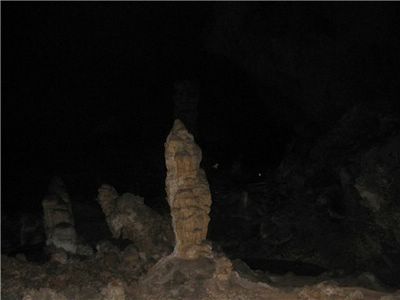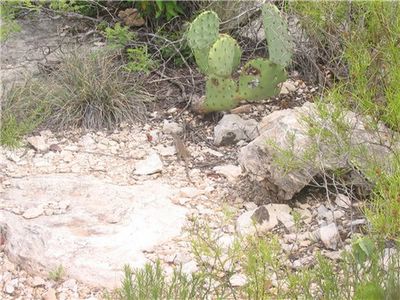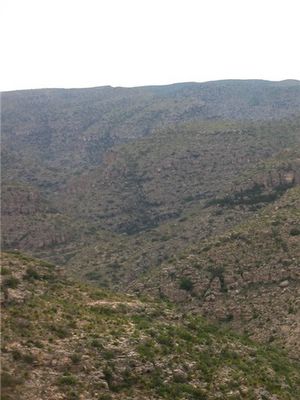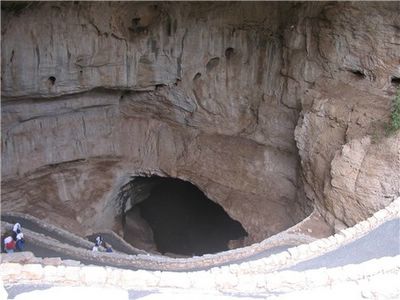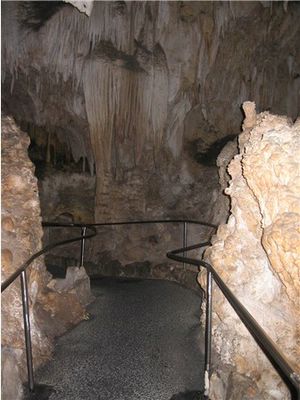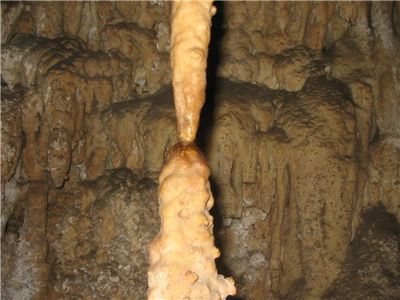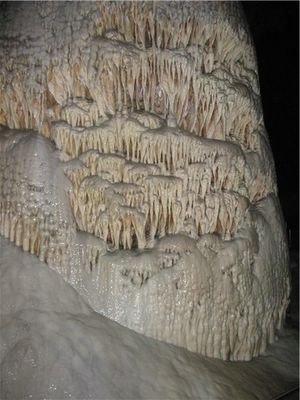Carlsbad Caverns: The southeast corner of New Mexico is very different than most of the rest of the state. In many ways it resembles Texas: cotton fields, oil wells, and large cattle ranches dot this corner of the state. Some 290 million years ago(Permian period) New Mexico was in the tropics. Carlsbad was underwater near the shoreline of the super continent Pangaea. Indeed it was to become a huge reef with a nearby lagoon ( those deposits are now a rock formation to the west of Carlsbad). The limestone contains a large amount of evaporates (particularly gypsum and rock salt) which were formed when the former ocean became trapped and evaporated. After Pangaea broke up parts of the super continent eventually collided(during the Cretaceous period with intense mountain building during the Tertiary period) and lifted up much of the southwest United States. The limestone reef cracked as it was lifted up. These cracks (and the gypsum) made for an ideal cave making environment and leads to the karst topography you will see in the first picture. There are actually several caves in this area that are proving to be interconnected. This makes the Carlsbad Cavern complex by far the largest cave system in the world. The honor was held by Monmouth Caves in Kentucky until exploration found the connections between Carlsbad, Hells Below, Cottonwood Caves, and others. The National Park Service web site claims that Carlsbad is the fourth longest cave, which is true if you consider the other connected caves as separate entities. As a kid I sometimes goofed around in these caves, particularly Cottonwood Cave. That cave had the largest crystal gypsum formation ever found.
Geology at QVCC
Tuesday, May 31, 2005
Monday, May 30, 2005
Sunday, May 29, 2005
Here is the opening of Carlsbad Cavern. This cave was developed for tourism during the depression (I think WPA). The descent here is about 1500 feet (300 meters). The cave splits into two main caverns, one of which is for tourists and the other is for bats. Close to a million bats fly out of this cave almost every summer evening (they migrate to Mexico for the winter).

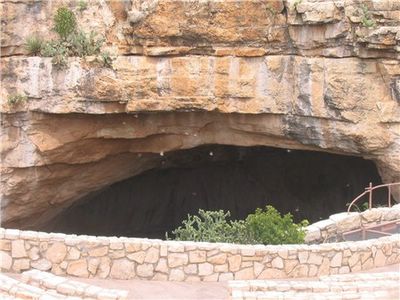
Friday, May 27, 2005
The pictures in the cave are usually dark as I did not have (nor could legally use) profesional lighting. This is a stalagmite (if it tries hard enough it "mite" make it to the ceiling). As the calcite laden water drips from the ceiling is evaporates and deposits the calcite below. This kind of rock is called dripstone.

